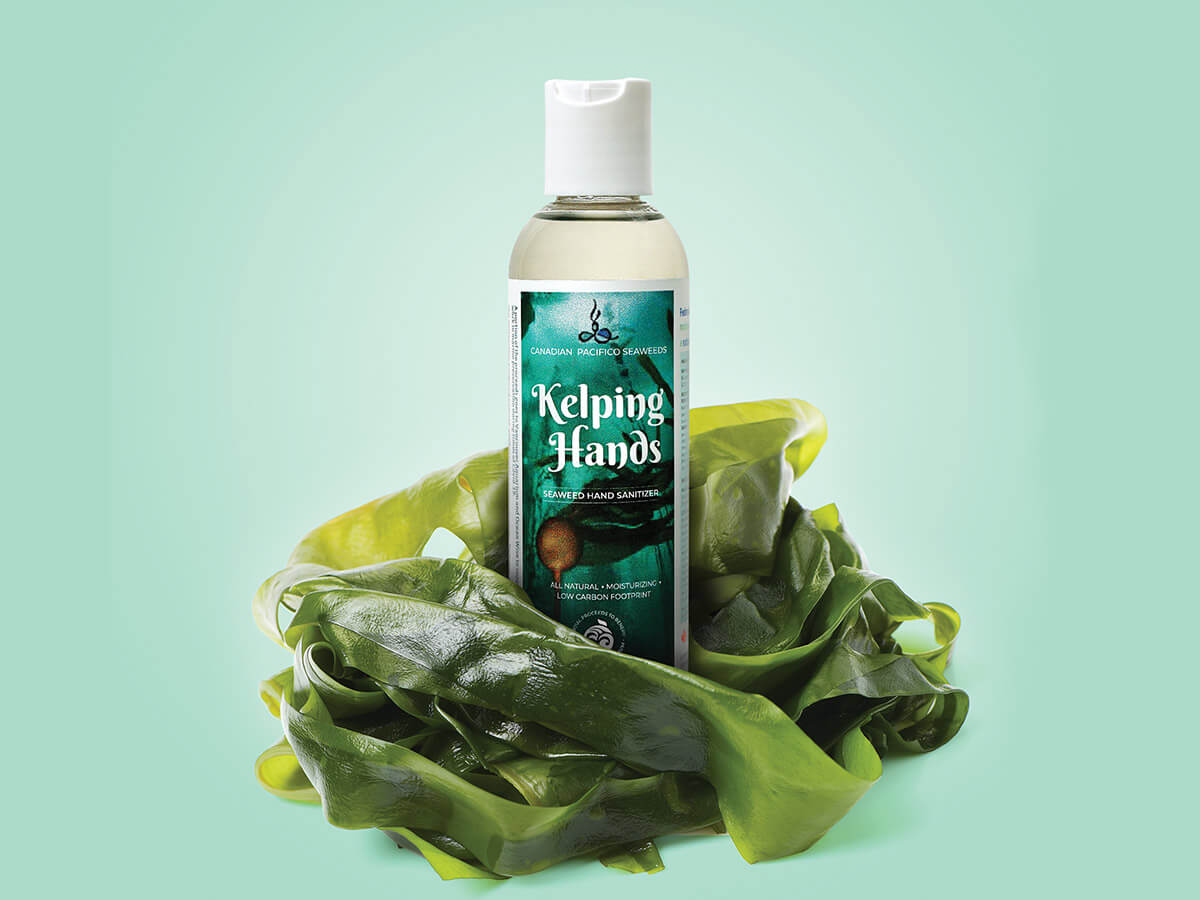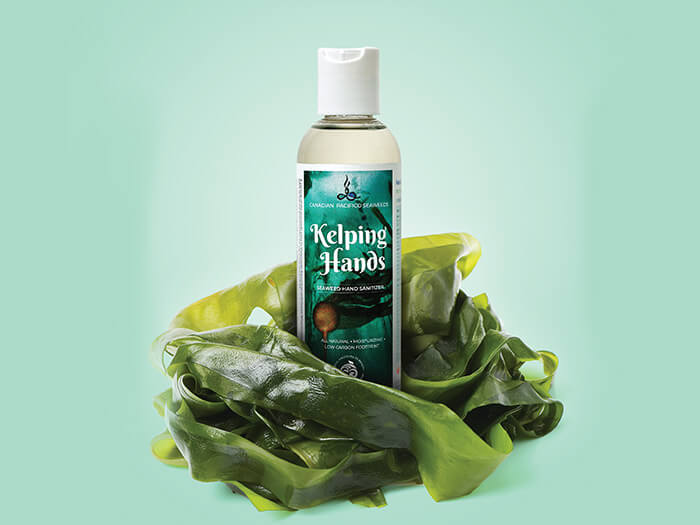
Kelping Hands: A hand sanitizer with purpose
 Kelping Hands is North America’s first seaweed-based hand sanitizer (Kelp by chengyuzheng)
Kelping Hands is North America’s first seaweed-based hand sanitizer (Kelp by chengyuzheng)
The COVID-19 pandemic had turned normally unsexy purchases—from toilet paper to hand sanitizer—into hot commodities. For Majid Hajibeigy, the 26-year-old founder and CEO of the Vancouver Island–based Canadian Pacifico Seaweeds, demand for the latter offered an opportunity to expand into a whole new product category. In September, he launched Kelping Hands, North America’s first seaweed-based hand sanitizer, an endeavour that’s half philanthropy and half strategic brand building.
Canadian Pacifico Seaweeds specializes in kelp aquaculture, helping small-scale farmers get set up, offering harvesting and processing technology, and developing a diverse array of seaweed end-products. Hajibeigy started the company in 2018, after graduating from the University of British Columbia and apprenticing with marine biologist Louis Druehl, known as the godfather of kelp cultivation. Selling hand-sanitizer is hardly business as usual.
“It was basically a distraction project,” says Hajibeigy of Kelping Hands’ inception. An early seed was planted when he heard about rapper 50 Cent’s improbable foray into selling G-Unit-branded hand sanitizer. Shortly after, he caught wind of Guernsey Seaweed, a U.K. maker of plant fertilizer that got into manufacturing hand sanitizer to address the lack of local supply. It used seaweed as a vitamin E–rich alternative to glycerin, a hydrating ingredient that had become scarce, given that everyone on Earth was suddenly stockpiling sanitizer.
But neither of these two discoveries would have persuaded him to cook up a similar product, were it not for one more motivating factor: learning that the Vancouver Aquarium was facing the threat of permanent closure due to the pandemic shutdown and was in need of emergency fundraising.
“That was the click,” recalls Hajibeigy, who was bold enough to ask if Guernsey would share their sanitizer recipe with him. Within 15 minutes of sending his request, he had a yes. “We’d like to raise half a million dollars for the Vancouver Aquarium through this project,” Hajibeigy says.
Donating a portion of proceeds from products sold is a classic case of cause marketing. But for Kelping Hands, philanthropy is the primary reason for being.
The pharmaceutical-grade sanitizer costs $16 per 120 ML bottle on Kelping Hands’ e- commerce site, and Hajibeigy says that 80 per cent of retail sales and 50 per cent of wholesale sales go to the aquarium. “This brand will always have a charitable side to it. Once we raise half a million, we’ll move on to the next nonprofit.” The initial batch of 10,000 units had all sold by early 2021, and at press time Hajibeigy was in talks to secure his first large-scale distribution deal in the U.S.
“I didn’t really want to make money off sanitizer, especially not during COVID,” says Hajibeigy. But the product has served as the perfect example for telling his company’s larger story: that seaweed can go into a product that’s good for you, good for the planet and good for the economy—the three pillars of sustainability.
The glycerin used in conventional sanitizers is often derived from soybean, coconut or palm oils—crops linked to widespread deforestation that carry a substantial carbon footprint. Seaweed, on the other hand, is an eco-hero—or at least has the potential to be. It flourishes without arable land, freshwater, fertilizers or pesticides, and it can be used to make everything from nutrient-dense superfoods and agri-feed to cosmetics, pharmaceuticals and even bioplastic. Seaweed abounds along B.C.’s coastline, home to the world’s greatest diversity of kelps.
“It’s 20 times more efficient at capturing carbon than a tree because it’s a very fast-growing plant. It grows a metre and a half every two weeks,” says Hajibeigy. There’s a caveat, however: A tree can sequester carbon for decades. Kelp breaks down yearly, rotting and re-releasing climate-changing greenhouse gases back into the atmosphere.
Seaweed hasn’t quite taken off as an industry in North America, prompting The New York Times to ponder in a recent headline, “Why Isn’t Kelp Catching On?” The short answer is that farming kelp can be a complicated process that often requires substantial infrastructure. Growing seaweed is commercially viable if done at scale, but small farmers don’t have the means and expertise to get there. That’s why Canadian Pacifico Seaweeds, the largest supplier of BC kelp products and ingredients, also helps new cultivators develop and implement their farm models.
Opportunity awaits for those who can figure it out. The research firm Global Market Insights valued the commercial seaweed market at over USD $58.98 billion in 2019, projecting it to exceed $85 billion by 2026.
Since Canadian Pacifico Seaweeds launched less than three years ago, others have joined the fray, including B.C.-based Cascadia Seaweed, Alaska’s Seagrove Kelp Co. (which recently set up North America’s largest kelp farm), and GreenWave, a Connecticut nonprofit dedicated to teaching regenerative ocean farming—with a waitlist of 7,000 people keen to learn its seaweed-based system. A promising business finally appears to be blooming.
GOING GREEN
Learn how Ex-IKEA marketing director Len Laycock aims to turn heads with a new environmentally friendly Canadian mattress brand and why lab-grown diamonds are a cheaper, more ethical alternative.